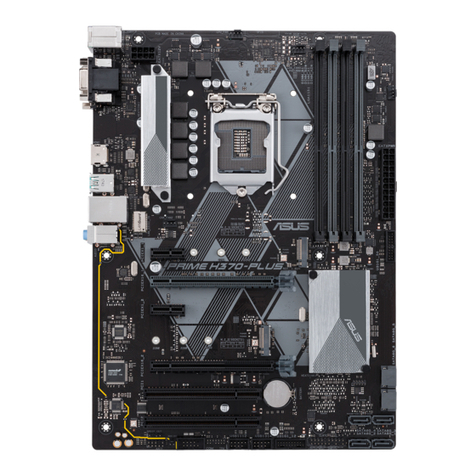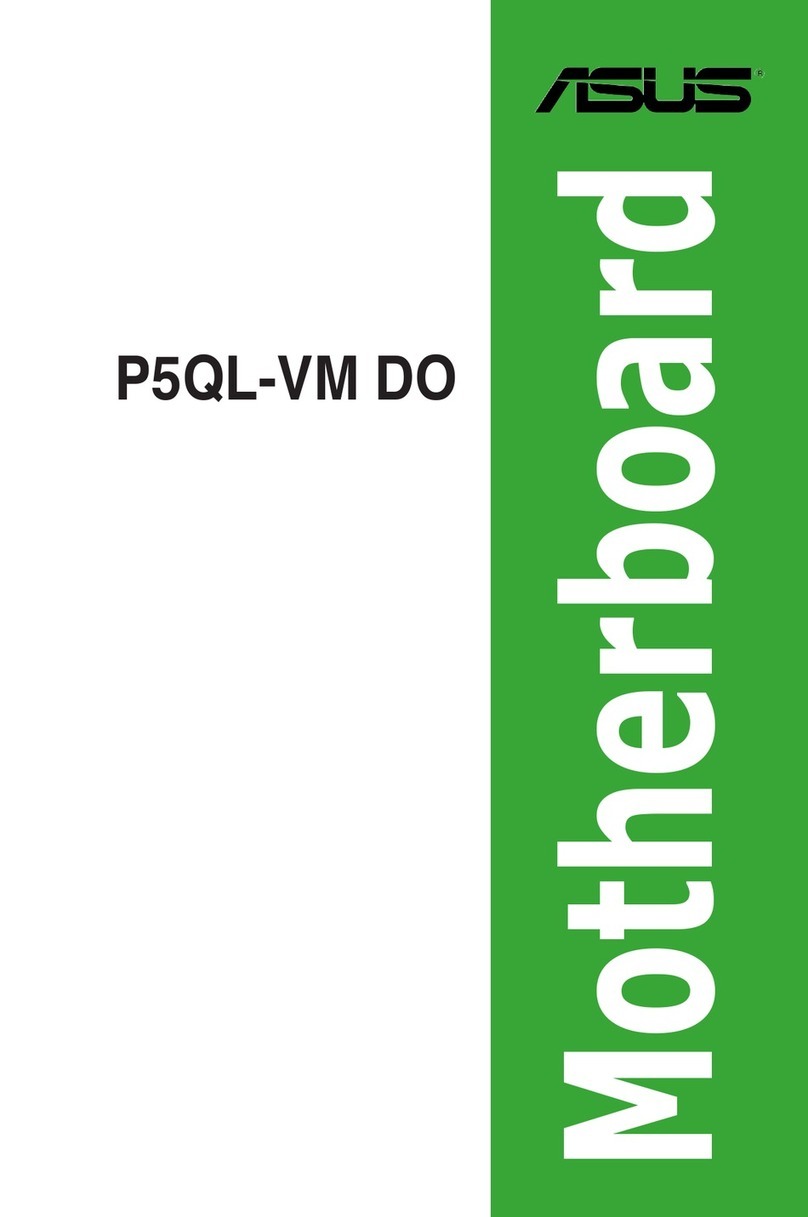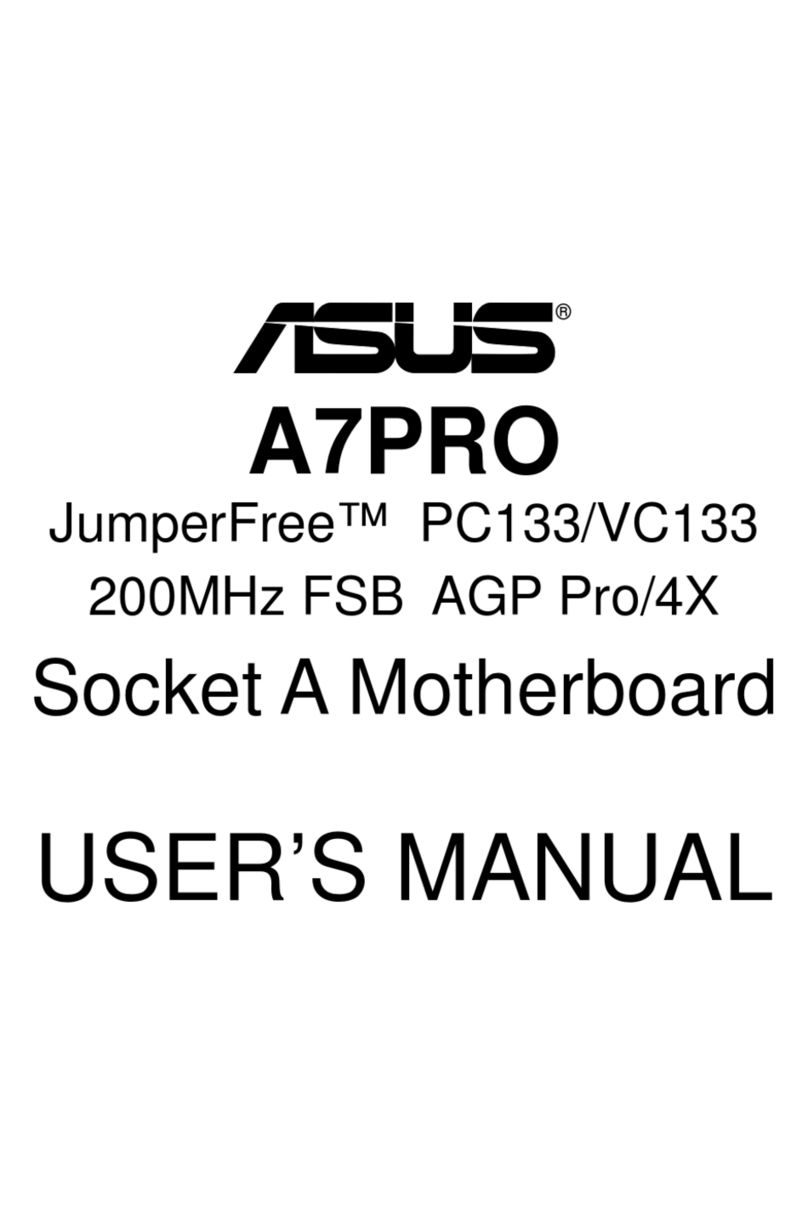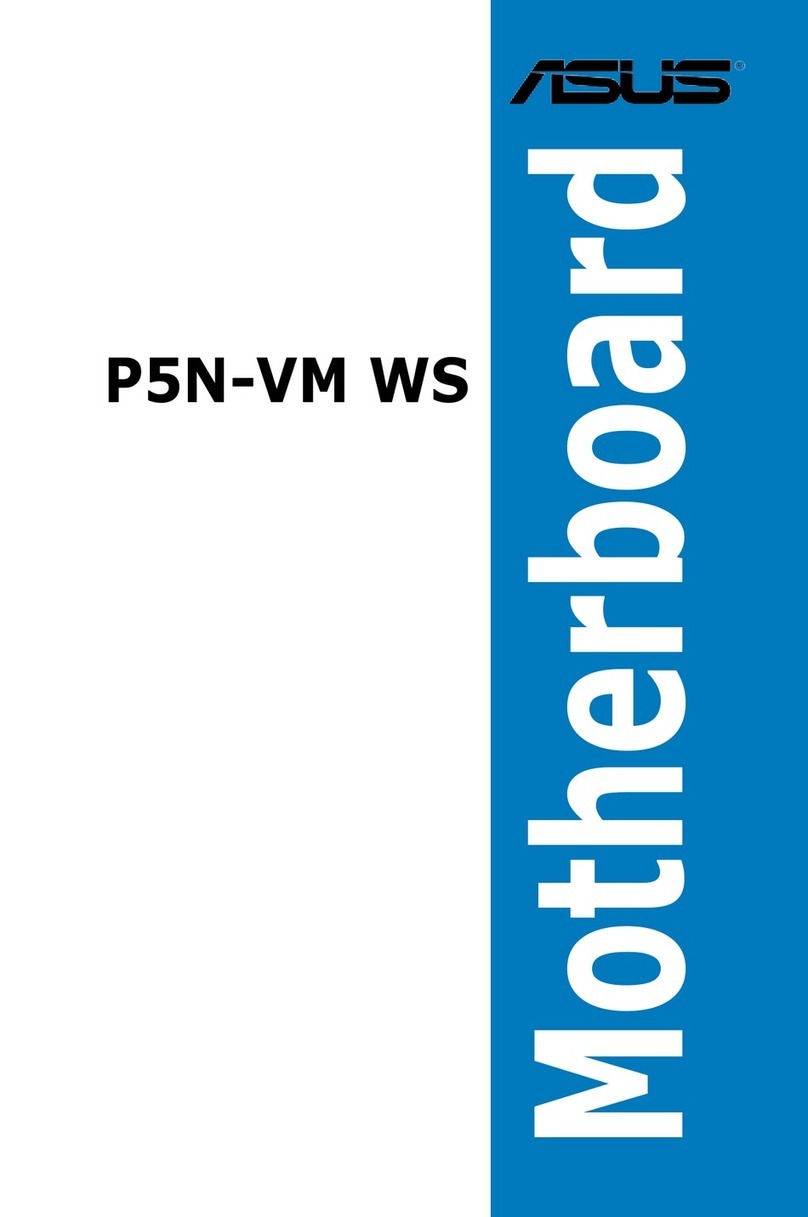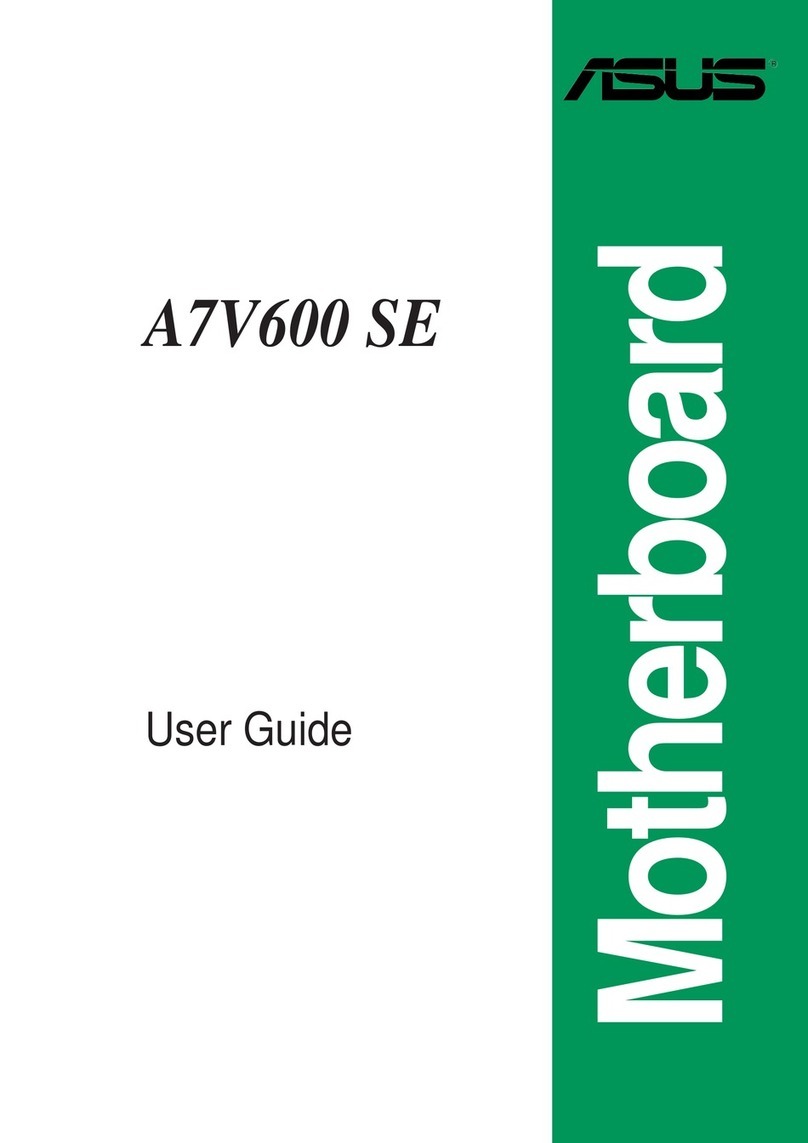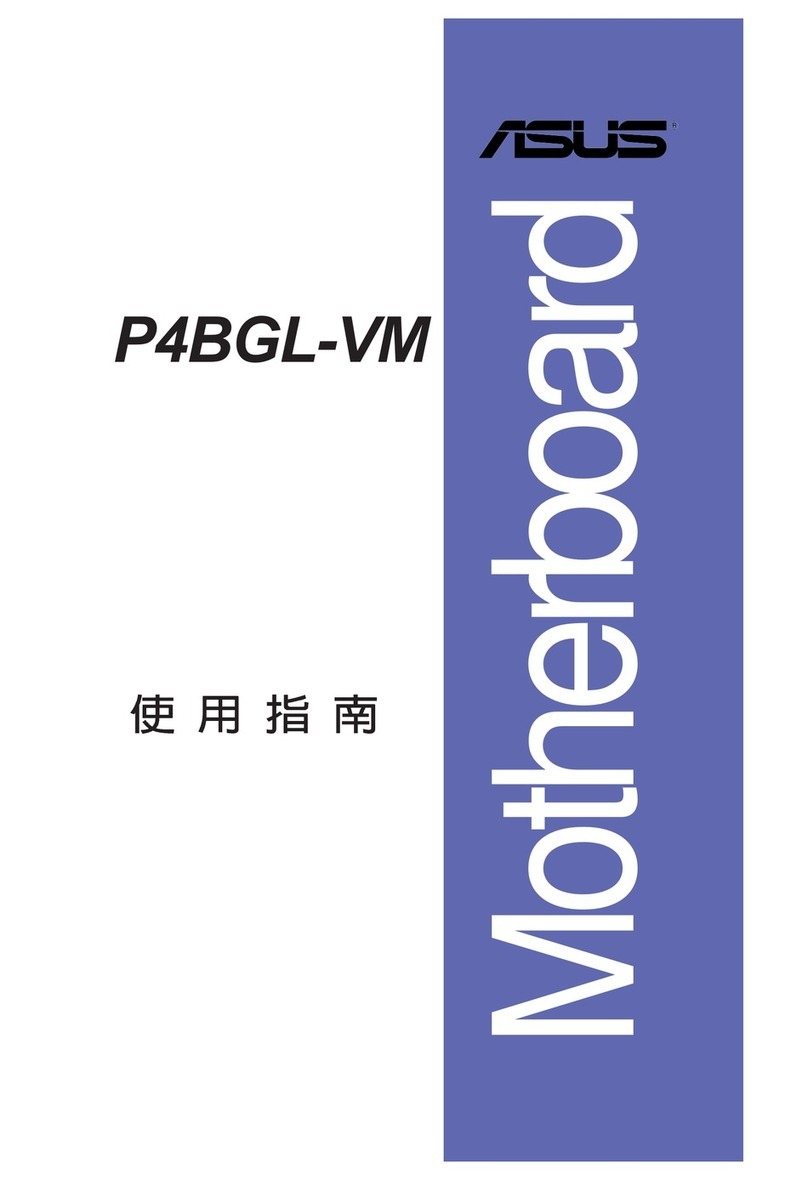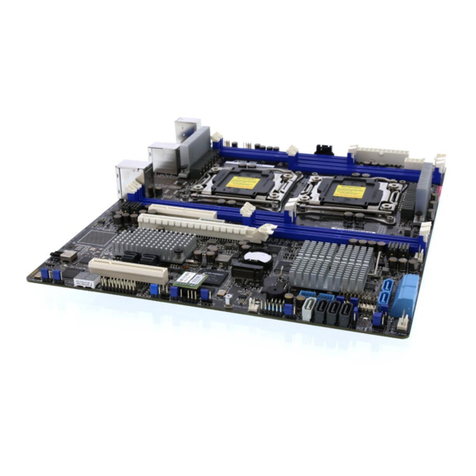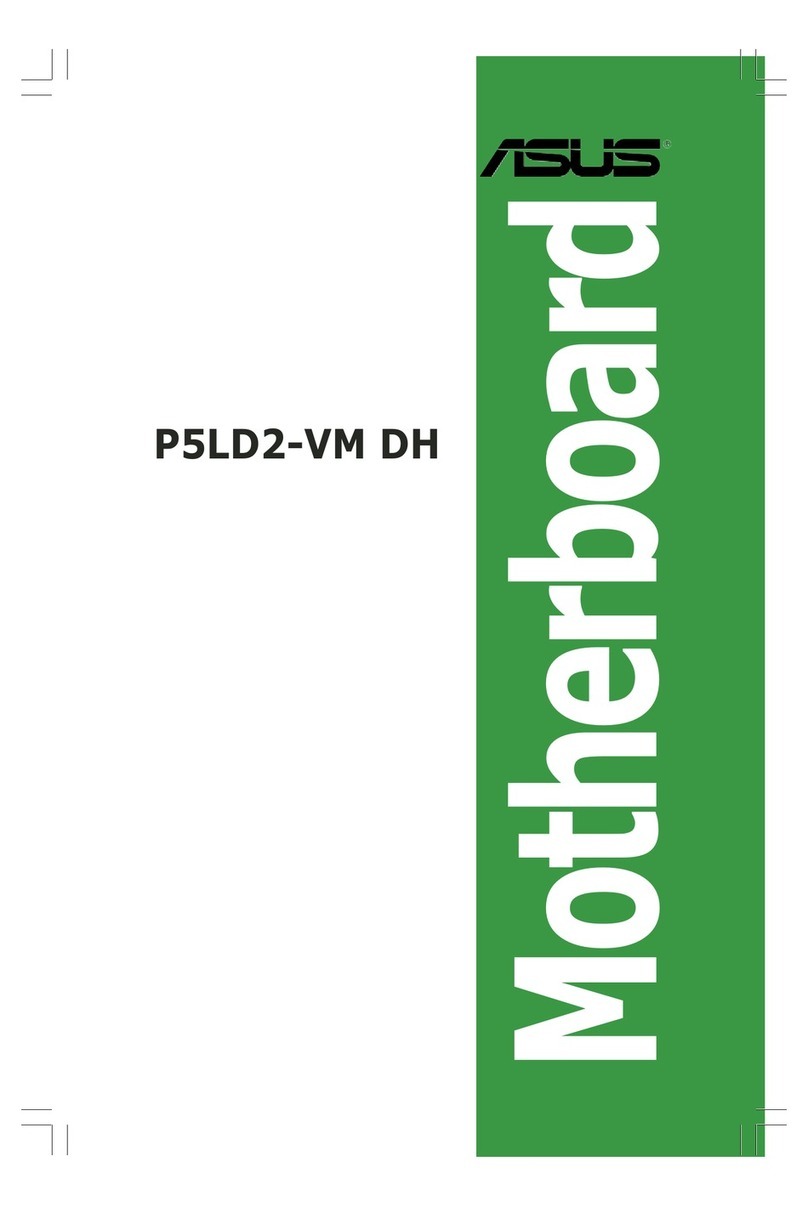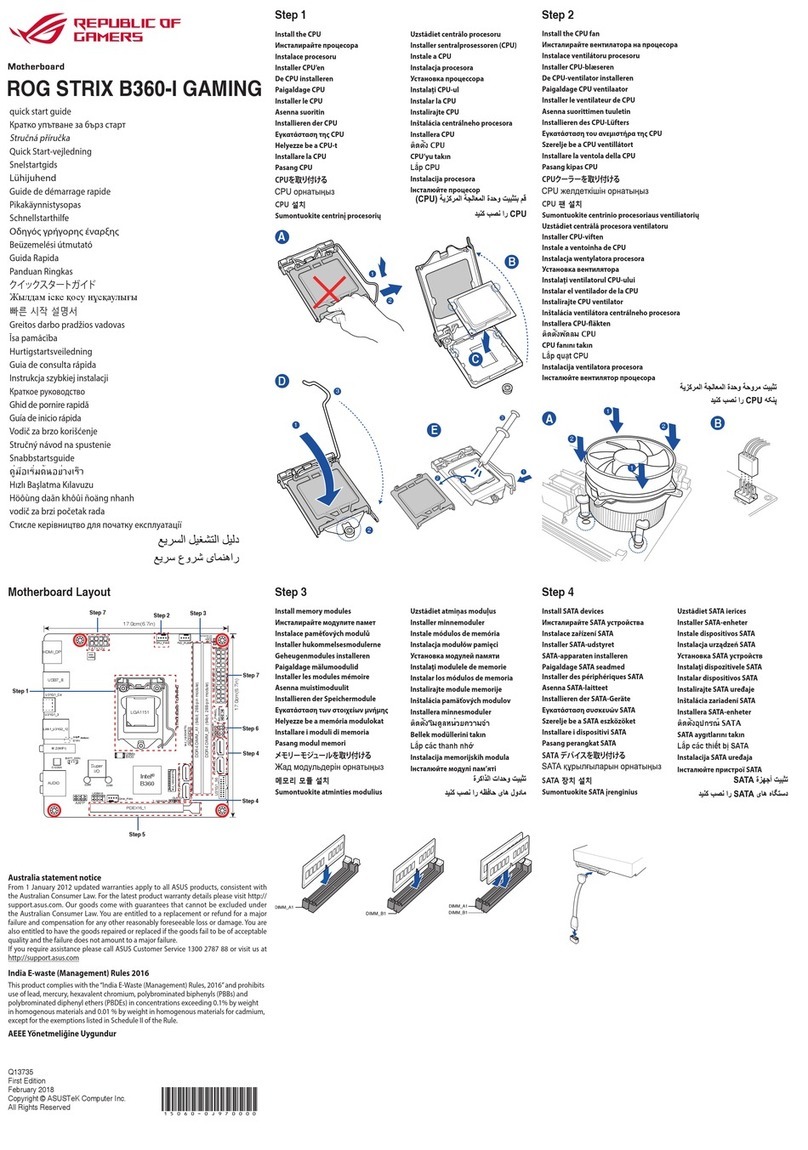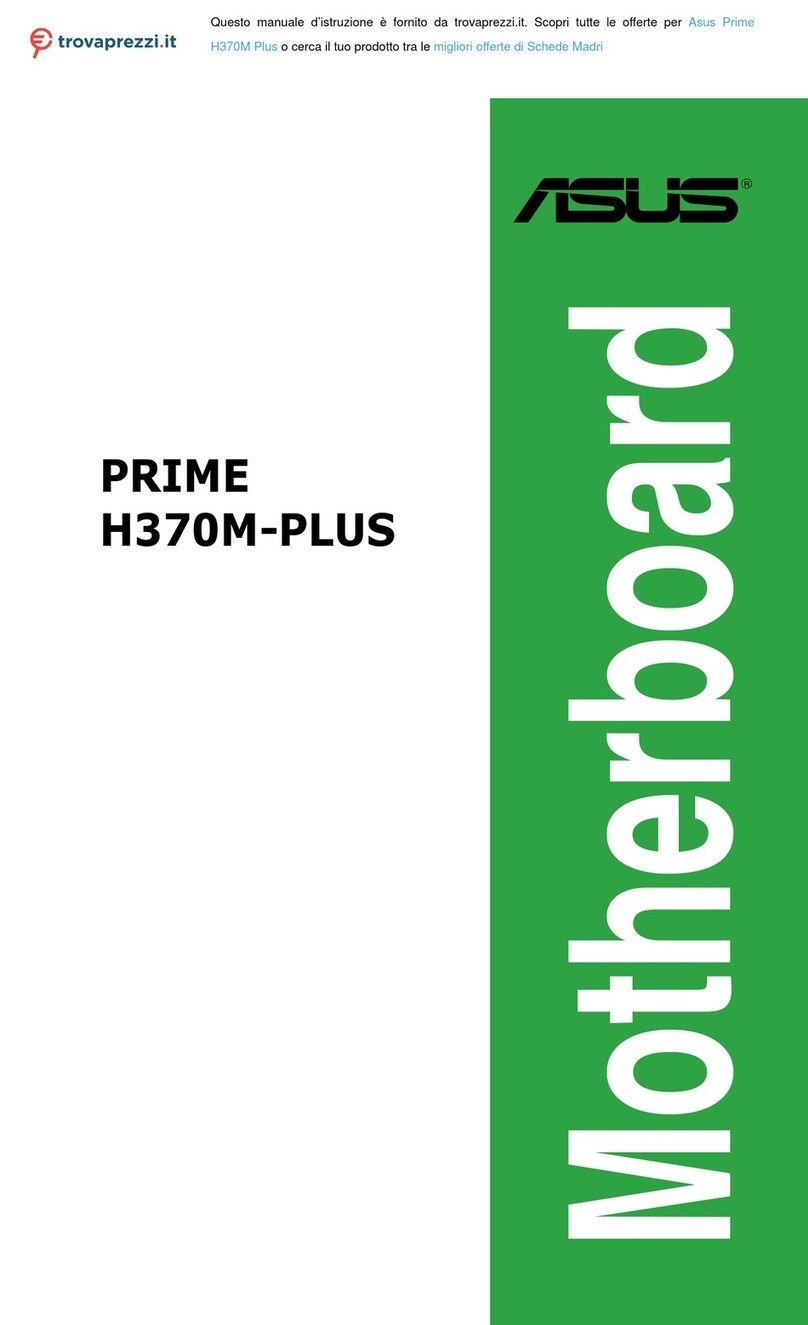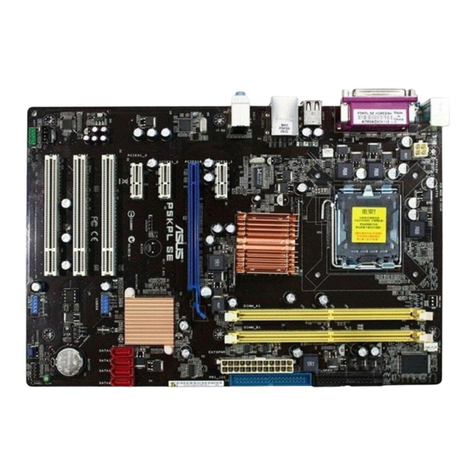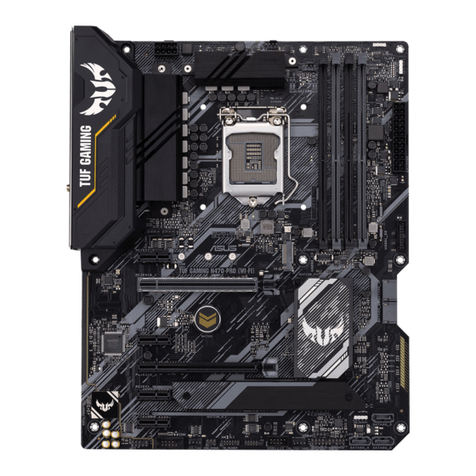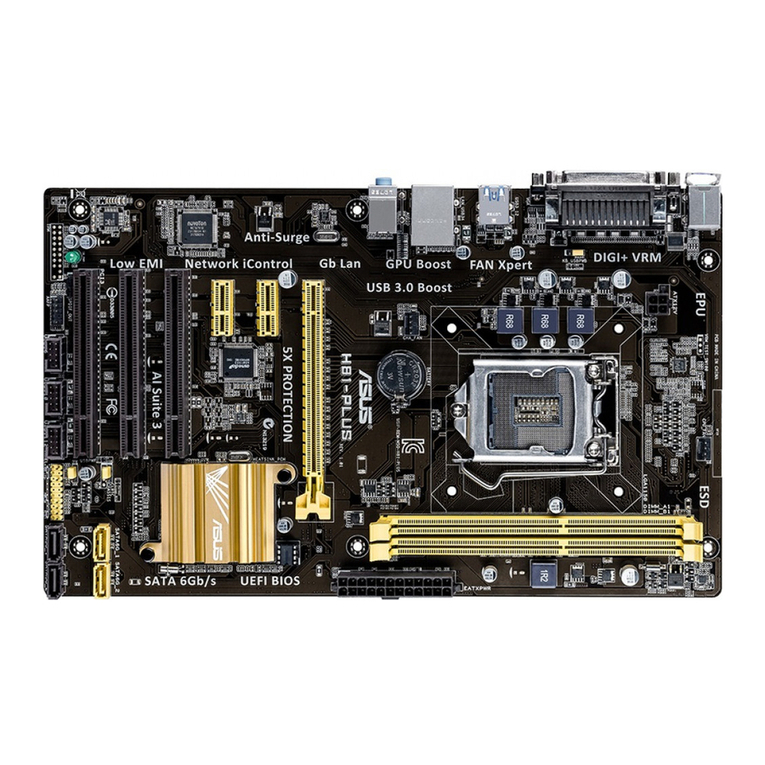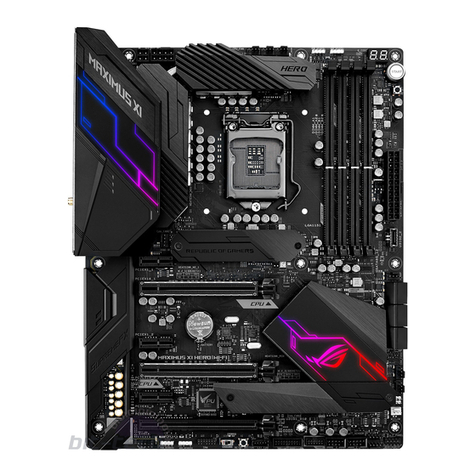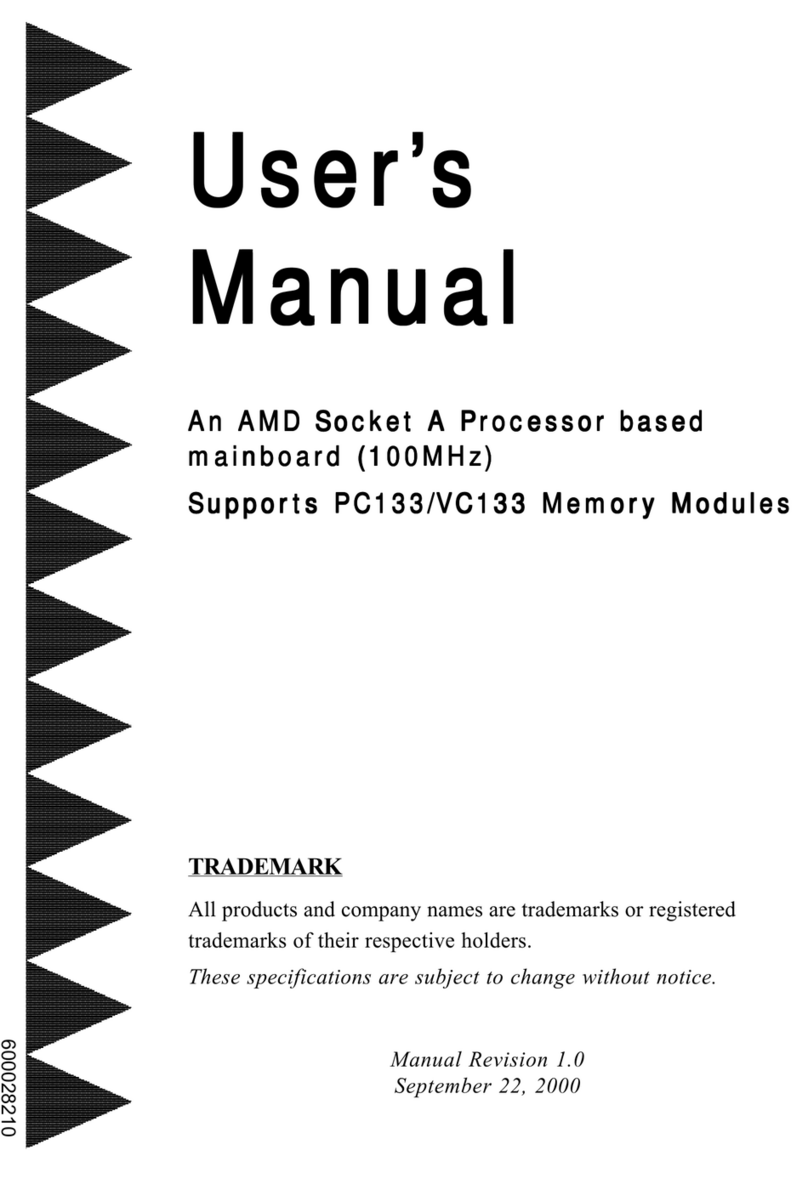
4 ASUS TX97 User’s Manual
CONTENTS
I. INTRODUCTION........................................................................... 7
How this manual is organized.......................................................... 7
Item Checklist .................................................................................. 7
II. FEATURES .................................................................................... 8
Features of the ASUS TX97 Motherboard ...................................... 8
Introduction to ASUS TX97 Series of motherboards........... 9
Parts of the ASUS TX97 Motherboard ............................................ 11
III. INSTALLATION .......................................................................... 12
Map of the ASUS TX97 Motherboard............................................. 12
Installation Steps.............................................................................. 14
1. Jumpers ........................................................................................ 14
Jumper Settings .................................................................... 15
Compatible Cyrix CPU Identification .................................. 17
2. System Memory (DIMM) ........................................................... 19
DIMM Memory Installation Procedures: ............................. 20
3. Central Processing Unit (CPU)................................................... 21
4. Expansion Cards ......................................................................... 22
Expansion Card Installation Procedure: ............................... 22
Assigning IRQs for Expansion Cards................................... 22
Assigning DMA Channels for ISA Cards............................. 23
5. External Connectors.................................................................... 24
Power Connection Procedures ................................................... 31
IV. BIOS SOFTWARE ....................................................................... 32
Support Software ............................................................................. 32
Flash Memory Writer Utility ........................................................... 32
Main Menu ........................................................................... 32
Advanced Features Menu ..................................................... 33
Managing & Updating your Motherboard's BIOS ..................... 34
6. BIOS Setup ................................................................................. 35
Load Defaults ....................................................................... 36
Standard CMOS Setup ............................................................... 36
Details of Standard CMOS Setup:........................................ 37
BIOS Features Setup .................................................................. 40
Details of BIOS Features Setup............................................ 40
Chipset Features Setup ............................................................... 43
Details of Chipset Features Setup......................................... 43
Power Management Setup.......................................................... 46
Details of Power Management Setup ................................... 46
PNP and PCI Setup .................................................................... 48
Details of PNP and PCI Setup .............................................. 48
Load BIOS Defaults ................................................................... 50
Load Setup Defaults ................................................................... 50
Supervisor Password and User Password .................................. 51
